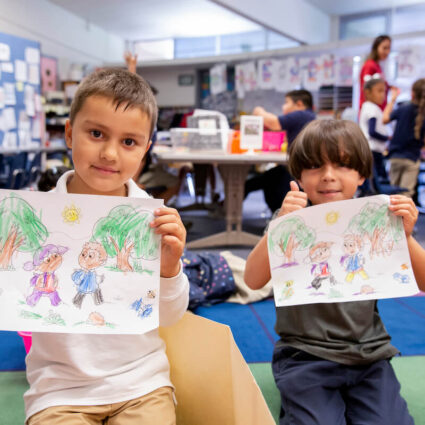
Supporting English Learners: Insights on the 22/23 School Year from Sobrato Philanthropies’ Robert Medina
We recently connected with Sobrato Philanthropies’ Senior Program Officer Robert Medina to learn more about his team and grantee partners’ current work in supporting English Learners (ELs). As California begins to come to terms with the longer-term impacts of the pandemic, especially on those learners who are furthest from opportunity like ELs, the already important work in this space is even more critical.
Were there any major themes that stood out for you and your team during the 2022/23 school year?
The state launched a bold new effort to expand the community schools’ model by investing $4.1 billion in the California Community Schools Partnership Program. Our grantee EdSource has done a wonderful job of reporting on the latest news in the roll-out of this initiative.
Our grantee Californians For Justice shared a nice summary of the state’s vision for community schools: “California’s community schools view students, their families and their community through the lens of their assets and strengths, and value the collective wisdom derived from experience, family, history and culture. They view the language of students and family members as a vital asset to be uplifted.” Read their full piece here.
We along with our partners are excited about this state investment because it will create more and deeper opportunities for culturally and linguistically diverse communities to shape and participate in their children’s education. We know from our grantee Oakland International High School Learning Lab, which serves newcomer or recent immigrant students, that the community schools approach helps address the holistic experience of students in a way that centers their strengths including their home languages.
How is EL grantee work showing up on the local, regional, and state levels?
Our EL Program partners with organizations at the state level and in the Los Angeles County and Fresno County/Central Valley regions. There are many important projects underway and I’ll share just a few examples to give folks a sense of this broader work.
In the Central Valley, our grantee Californians Together is facilitating the launch of the Central Valley Multilingual Consortium, a new coalition of educators, advocates, parent and youth leaders, and others who are joining hands to champion ELs. The group is developing a policy agenda to improve teaching and learning for all ELs in Central Valley communities. This kind of collective action on behalf of ELs is already taking root in Los Angeles County, where dozens of organizations come together in the Consortium for EL Success.
Throughout California, our grantee SEAL continues to demonstrate what rigorous, engaging, joyful learning for ELs and all students looks and feels like. They recently came out with a brief on promising teaching practices in STEM (science, technology, engineering, and math). They’re also collaborating with our grantee Center for Equity for ELs at Loyola Marymount University on a particularly exciting project in the Los Angeles Unified School District. At the same time, our grantees continue to raise awareness of the EL Roadmap State Policy adopted by the State Board of Education in 2017. The Roadmap’s vision of thriving ELs who “fully and meaningfully access and participate in a twenty-first century education from early childhood through grade twelve” is a North Star for all of us in California.
What was the biggest challenge faced this year and what did we and other funders learn from it?
As an education field, we’re beginning to learn about the impact of the pandemic on student learning, especially for our students who are furthest from opportunity like ELs. Our grantee PACE published a piece last November with some striking research findings: ELs are among the most impacted students. Our grantees across the board are working to support districts and ensure state and local education policies reflect what ELs and linguistically diverse communities need in light of the pandemic’s disproportionate impact on their lives.
What’s new in the field? What are you excited about?
Over the past year, we started to make new investments in youth storytelling. One example: We partnered with the Youth Leadership Institute (YLI) to train a group of high school students from Fresno who are current and former ELs on storytelling. The group produced a “zine” (or digital magazine) with their stories about being ELs to share with district and community leaders. YLI is continuing this work with another cohort of students. As we’ve explored the potential of narrative change strategies, this kind of community-centered storytelling will be an important piece of our work moving forward.